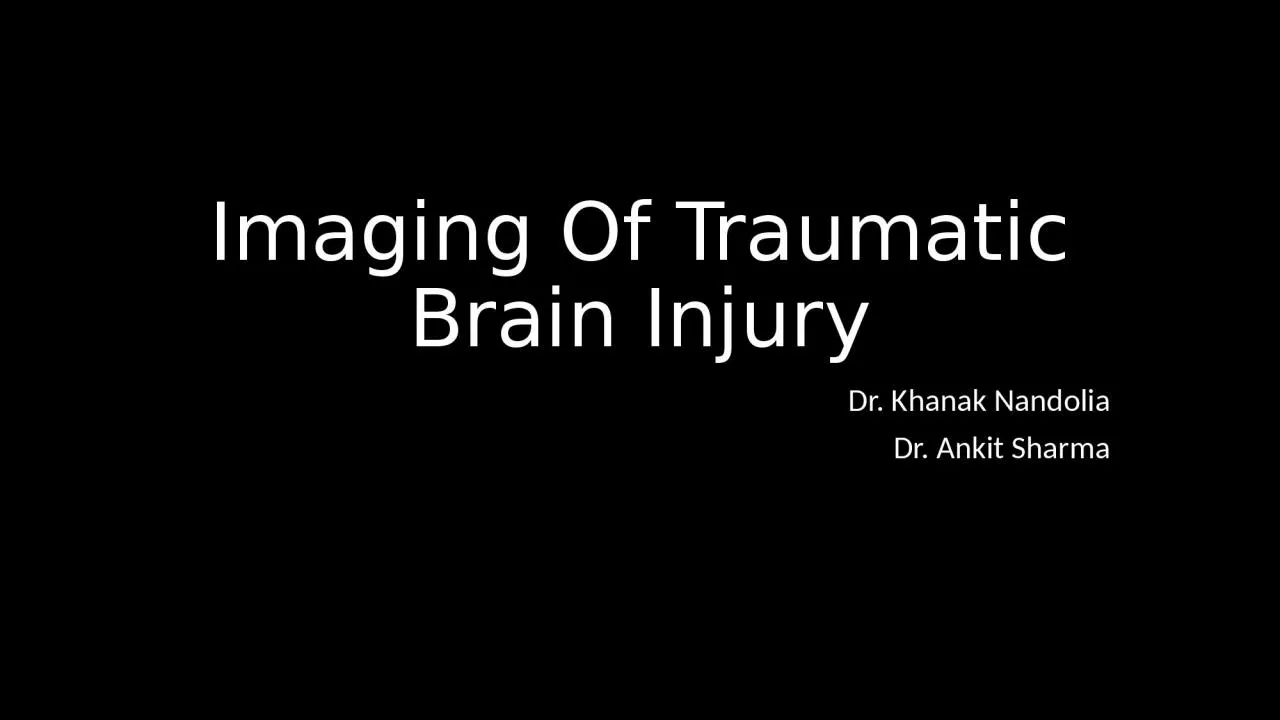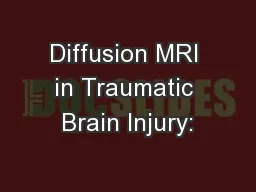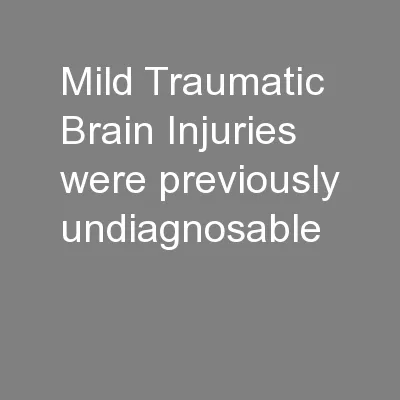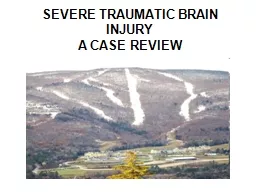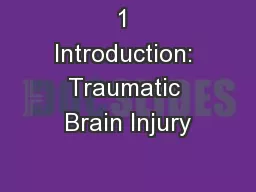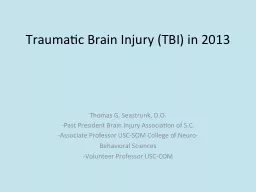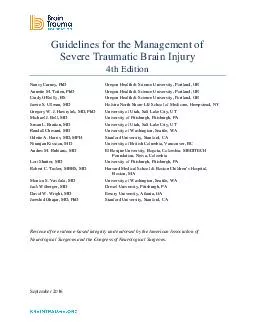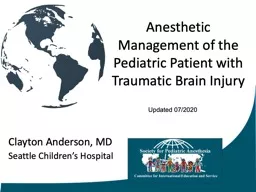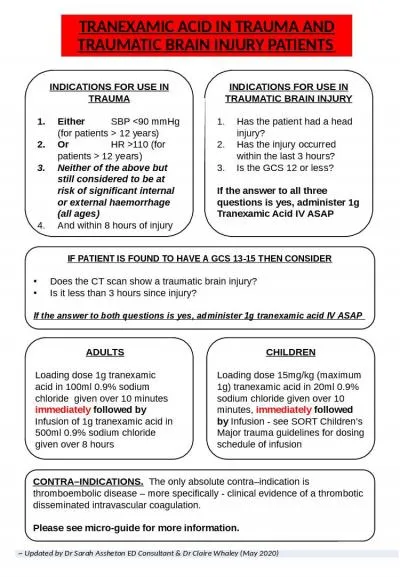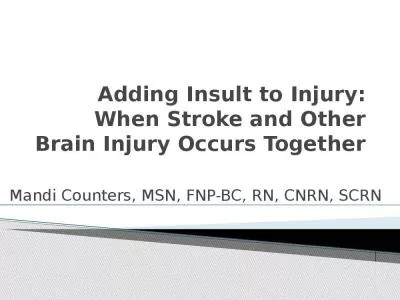PPT-Imaging Of Traumatic Brain Injury
Author : Foodie | Published Date : 2022-08-03
Dr Khanak Nandolia Dr Ankit Sharma Learning Objectives To learn mechanisms of various TBI To identify common TBI To identify complications of TBI Epidemiology 10
Presentation Embed Code
Download Presentation
Download Presentation The PPT/PDF document "Imaging Of Traumatic Brain Injury" is the property of its rightful owner. Permission is granted to download and print the materials on this website for personal, non-commercial use only, and to display it on your personal computer provided you do not modify the materials and that you retain all copyright notices contained in the materials. By downloading content from our website, you accept the terms of this agreement.
Imaging Of Traumatic Brain Injury: Transcript
Download Rules Of Document
"Imaging Of Traumatic Brain Injury"The content belongs to its owner. You may download and print it for personal use, without modification, and keep all copyright notices. By downloading, you agree to these terms.
Related Documents

